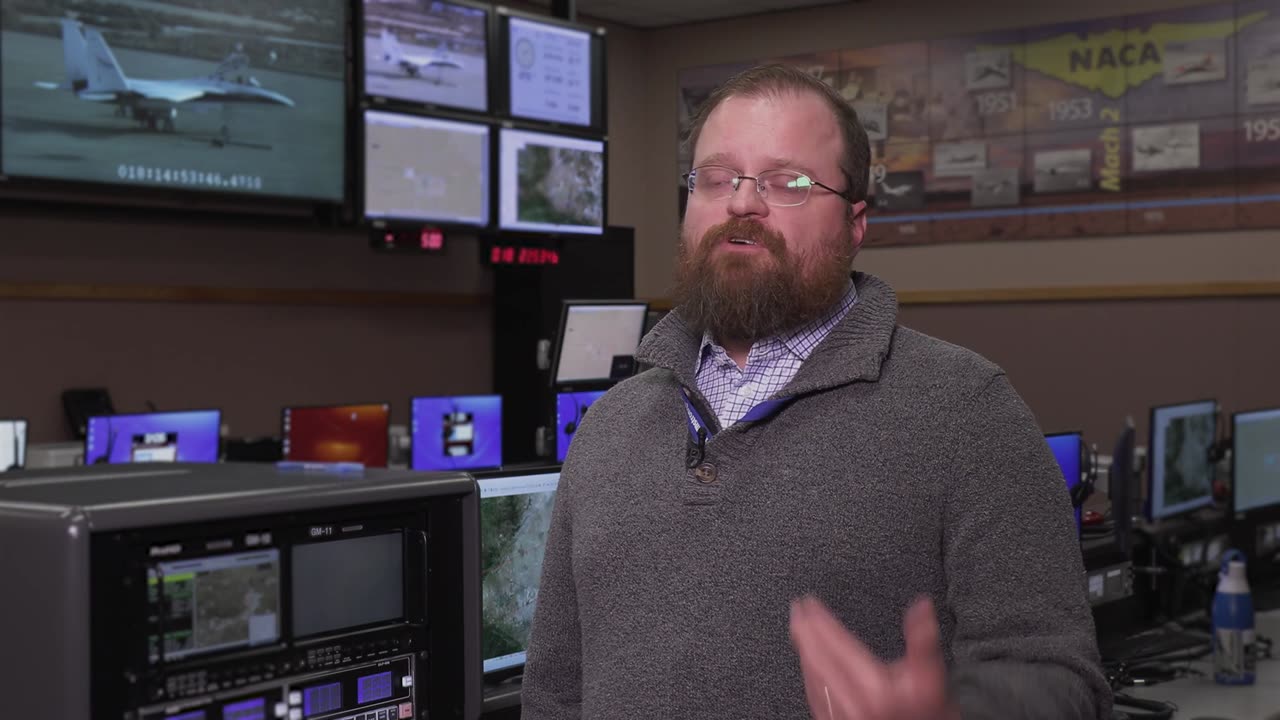Premium Only Content

NASA Tests Ground Recording Equipment for X-59’s Future Quiet Supersonic Flights
NASA recently completed a series of tests to reduce risks prior to Phase 2 of its Quesst mission, which will test the ability of the X-59 experimental aircraft to make sonic booms quieter. The third series of Carpet Determination in Entirety Measurements (CarpetDIEM) flights examined the quality of a new generation of ground recording system units. They also allowed NASA to test the operational procedures needed to deploy the recording systems and retrieve the data they collect. For the tests, NASA set up 10 ground recording system units over a 30-mile stretch of California desert. Using an F-15 and an F-18 from NASA Armstrong, the testing involved 20 supersonic passes with speeds ranging from Mach 1.15 to Mach 1.4 and at altitudes ranging from 40,000 feet to 53,000 feet. Three of the passes involved an F-18 conducting a special inverted dive maneuver to produce a quiet sonic boom, with one getting as quiet as 67 perceived level decibels (PLdB). The testing also validated the use of Automatic Dependent Surveillance-Broadcast, ADS-B, an existing technology flown on all commercial aircraft and most private aircraft to report speed and position, to trigger the GRS units to begin recording. During Quesst Phase 2, NASA will spread 70 ground recording stations over a 30-mile test site to record the quiet sonic thumps of the X-59.
-
 37:13
37:13
BonginoReport
3 hours agoOpenAI Whistleblower Commits "Suicide" (Ep.105) - 12/16/2024
24.5K28 -
 LIVE
LIVE
Wendy Bell Radio
4 hours agoABC News Can Suck It
13,635 watching -
 LIVE
LIVE
Jeff Ahern
1 hour agoMonday Madness with Jeff Ahern (the truth is out there)
396 watching -
 1:27:08
1:27:08
Game On!
13 hours ago $5.63 earnedTravis Hunter wins Heisman, Mahomes goes DOWN, and so much more from the sports weekend!
51.9K3 -
![Attack of the DRONES! [D/REZZED Paranormal News]](https://1a-1791.com/video/s8/1/0/_/B/L/0_BLv.0kob-small-Attack-of-the-DRONES-DREZZE.jpg) 31:19
31:19
Clownfish TV
20 hours agoAttack of the DRONES! [D/REZZED Paranormal News]
25.1K10 -
 21:12
21:12
Degenerate Jay
23 hours ago $2.81 earnedIs Marvel Rivals Worth Playing?
38.4K4 -
 14:33
14:33
Tactical Advisor
22 hours agoIs Budget Amazon Night Vision Just As Good? Part 2
18.8K2 -
 14:04
14:04
Forrest Galante
15 hours agoHow I Was Almost Sentenced to Death in Asia (True Story)
88.9K46 -
 5:55
5:55
BIG NEM
17 hours agoThe Simple Secret to Unlocking Your Creativity
74.2K7 -
 1:00:09
1:00:09
PMG
2 days ago $28.09 earned"MAHA & What Should Be Next With Mark Sherwood"
59.8K5